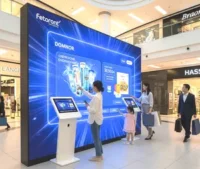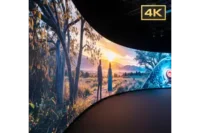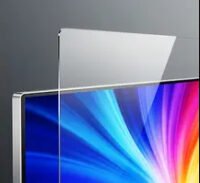The Evolution, Advantages, and Applications of LED Screen Technology: Illuminating Modern Innovation
Published: 15 Nov 2024
The Evolution, Advantages, and Applications of LED Screen Technology , LED (Light Emitting Diode) display screen technology has revolutionized industries, from amusement to city planning. This deep dive explores its historic evolution, unequalled blessings, and various packages, even as demystifying the technology at the back of semiconductor lights and electroluminescence in LEDs. Let’s shed mild on how this innovation became a cornerstone of current presentations!

The Evolution of LED Screen Technology
From Humble Beginnings to Global Dominance
The journey of LEDs began in 1962 when engineer Nick Holonyak Jr. invented the first visible red LED. Initially used as indicator lights in calculators and appliances, these early diodes were limited to red hues and low brightness.
The 1990s: A Spectrum of Possibilities
A leap forward got here with the development of blue LEDs via Shuji Nakamura in 1993. By combining crimson, green, and blue (RGB) LEDs, engineers unlocked full-shade displays. This technology also noticed advancements in semiconductor materials like gallium nitride (GaN), which stepped forward performance and brightness. The 2000s: Enter Advanced Display Systems
The 21st century introduced OLED (Organic LED) and MicroLED technologies. OLEDs, with their self-emissive pixels, enabled thinner screens and true blacks. Meanwhile, MicroLEDs offered higher brightness and longevity, setting the stage for next-gen TVs and wearables.
The Future: Flexibility and Transparency
Today, researchers are pushing boundaries with foldable LED screens and transparent displays. Imagine car windshields projecting navigation data or retail stores using see-through ads-these innovations are redefining user interaction.
Advantages of LED Screen Technology
Energy Efficiency & Sustainability 💡
LEDs consume up to 80% less energy than traditional incandescent bulbs. Their reliance on semiconductor lighting reduces heat waste, making them ideal for eco-conscious projects like smart cities and solar-powered billboards.
Unmatched Brightness & Color Precision 🎨
Thanks to electroluminescence in LEDs, these screens deliver vibrant colors and high lifelike images.contrast ratios. For example, stadiums use LED walls to ensure visibility even in direct sunlight, while 4K TVs reproduce
Exceptional Durability & Lifespan 🔧
LED screens last 50,000–100,000 hours—over a decade of continuous use! Their solid-state design resists damage from vibrations, temperature changes, and humidity, making them perfect for outdoor installations.
Design Flexibility & Customization 🌟
Unlike rigid traditional displays, LEDs can be curved, folded, or scaled to massive sizes. Architects embed them in building facades for dynamic art, while retailers create immersive in-store experiences.
Applications of LED Screen Technology
1. Entertainment & Media 🎬
- Digital Billboards: Cities like Times Square use LEDs for eye-catching, energy-efficient ads.
- Live Events: Concerts deploy LED stages for 360° visuals, enhancing audience immersion.
2. Healthcare & Education 🏥📘
- Medical Imaging: High-resolution LED screens assist in precise diagnostics and surgeries.
- Interactive Learning: Schools adopt LED smart boards for engaging, touch-enabled lessons.
3. Smart Cities & Transportation 🏙️🚦
- Traffic Management: Real-time LED signs adjust routes during accidents or congestion.
- Public Transit: Energy-saving displays provide schedules and emergency alerts in subways.
4. Consumer Electronics 📱💻
- Smartphones: OLED screens offer deeper blacks and faster response times for gaming.
- Wearables: Flexible LEDs power futuristic smartwatches and augmented reality glasses.
The Science Behind LEDs: Electroluminescence & Semiconductor Lighting
How Electroluminescence Powers LEDs 🔬
LEDs produce light through electroluminescence-a process where electrons pass through a semiconductor material (e.g., gallium arsenide) and release photons. The color of light depends on the semiconductor’s energy bandgap:
- Red/Orange: Aluminum gallium arsenide (AlGaAs)
- Blue/Green: Indium gallium nitride (InGaN)
The Role of Semiconductor Lighting
Semiconductors enable LEDs to convert electricity directly into light with minimal energy loss. Innovations like quantum dot LEDs (QLEDs) further enhance color accuracy, making them a staple in premium TVs and monitors.
FAQ: LED Screen Technology
Q1: How do LED screens differ from LCDs?
A: LCDs require a backlight (often LED-based) to illuminate pixels, while LEDs emit their own light. This makes LEDs thinner, more energy-efficient, and capable of true blacks in OLED variants.
Q2: Are LED displays eco-friendly?
A: Absolutely! Their low power consumption and long lifespan reduce energy use and electronic waste. Many LEDs are also recyclable.
Q3: Can LEDs work in extreme temperatures?
A: Yes! Advanced display systems using ruggedized LEDs operate flawlessly in environments ranging from -30°C to 60°C, ideal for outdoor signage.
Q4: What makes Micro-LED superior to OLED?
A: Micro-LEDs use inorganic materials, offering higher brightness, better longevity, and no risk of screen burn-in compared to organic OLEDs.
Q5: How are LEDs used in semiconductor lighting?
A: Semiconductor lighting refers to LEDs’ use of materials like GaN to efficiently convert electricity into light, replacing traditional lighting in homes, streets, and industries.
What is the latest LED display technology?
MicroLED 🔬✨:
Each pixel is a microscopic, self-emissive LED (no backlight!), delivering perfect blacks, 0 burn-in, and 3,000+ nits brightness – outperforming OLED. Modular panels enable seamless giant screens (The Wall TV) and transparent displays 🚀.
Naked-Eye 3D LED 👁️🌌:
To create glass-free holographic effects, lenses or AI I-track combine micro-led, used in merging ads, surgical screens and next jen.
Bonus: QD-OLED (Quantum Dot + OLED) boosts color/speed for premium TVs! 🎨⚡
Conclusion: Lighting the Path to Tomorrow
LED screen technology has evolved from simple indicator lights to the backbone of advanced display systems. With benefits like sustainability, durability, and versatility, LEDs are reshaping industries and daily life. As research into semiconductor lighting and electroluminescence continues, expect even smarter, greener, and more immersive applications-truly, the future looks bright!
Share this guide to spread the brilliance of LED innovation!

- Be Respectful
- Stay Relevant
- Stay Positive
- True Feedback
- Encourage Discussion
- Avoid Spamming
- No Fake News
- Don't Copy-Paste
- No Personal Attacks



- Be Respectful
- Stay Relevant
- Stay Positive
- True Feedback
- Encourage Discussion
- Avoid Spamming
- No Fake News
- Don't Copy-Paste
- No Personal Attacks




